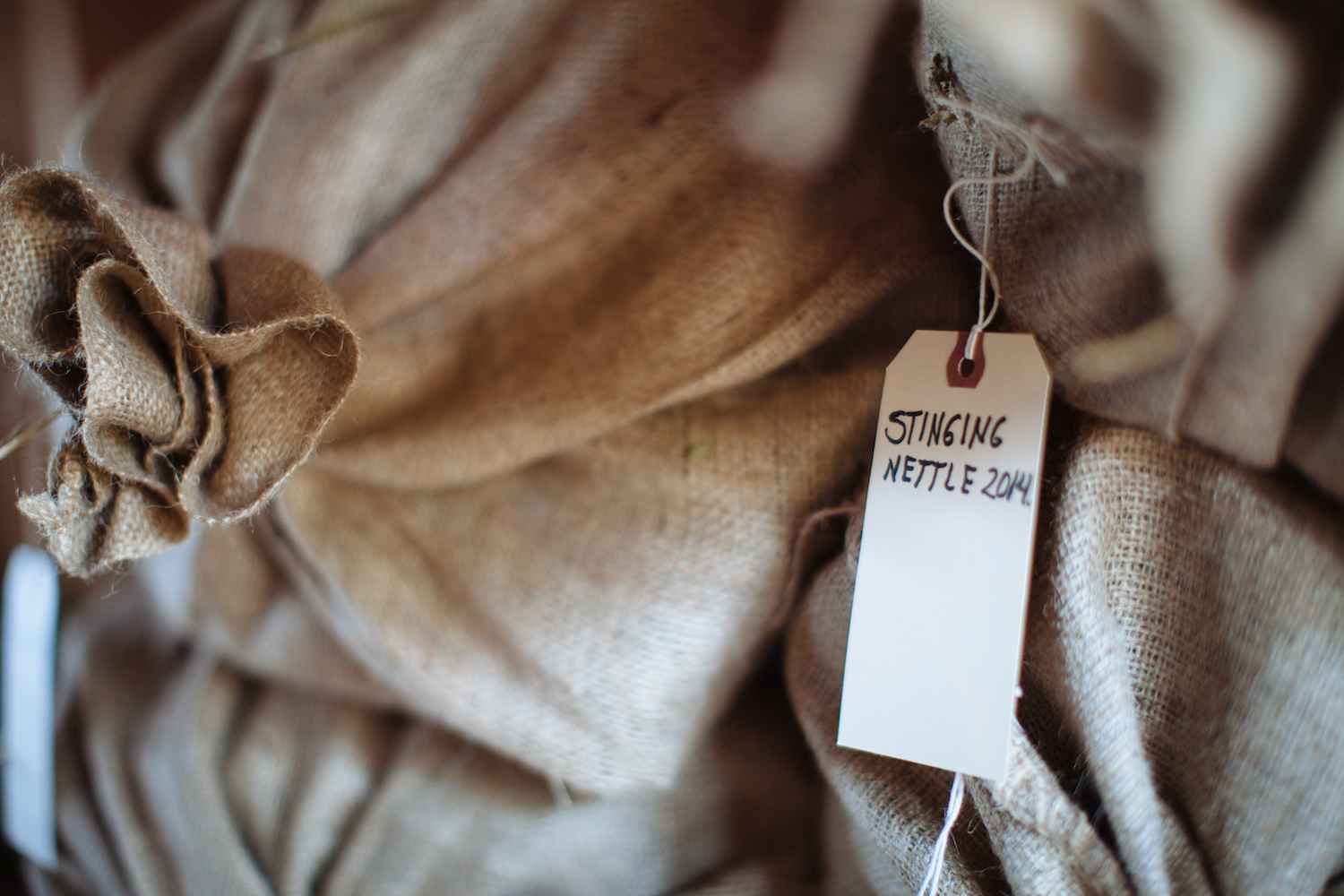How naked, cultureless wine is remaking Sonoma County viticulture.
Way back in the 1980s, Ted Lemon worked the vineyards in Burgundy, the French heart and home of Pinot Noir. When he returned to the United States and settled among the apple orchards of western Sonoma County, it was never his intention to emulate the French. Rather, the young winemaker wanted to explore the wild country east of the foggy coast as it stretched north to the Anderson Valley. Steep slopes and soils of many types promised Lemon excellent wines, and here he sank his roots. France was easily forgotten.
Today, Lemon spends his days among his Sebastopol vines, and the barrels and bottles of Pinot Noir and Chardonnay. The 56-year-old New York native makes wine under the Littorai label, the small winery he launched with his wife Heidi in 1993. That was about the time that countless entrepreneurs were looking to stake a claim in the state’s burgeoning wine industry. Many followed a formulaic approach to their craft, using extra ripe fruit to make high-alcohol fruit bombs that, through the 1990s, became the proud signature style of California, the blowsy, teeth-staining lip-smackers that critics loved.
But Lemon veered early on from the path most traveled. He believed the state’s soils and microclimates had much more to offer than heavy-handed Cabs, oak-ruined Chards, and pepper-sharp Zins. So he diverged, and with an interest in showcasing California’s terroir, Lemon has spent the past 20 years not so much creating wines as simply allowing them to emerge from a time and a place. For Lemon, that place is the wild seaward hill country of Sonoma and Mendocino counties.
Visitors to the Littorai winery, where tastings are arranged by appointment, find a lineup of single-vineyard wines, all either Pinot Noir or Chardonnay. These two grape varieties, in Lemon’s estimation, can channel a location’s character to the bottle more fluidly than any others.
“They speak wonderfully of tiny little pieces of land,” he says, referring to sites like the Charles Heintz, Platt, Mays Canyon, and Haven vineyards from which he harvests. “Inherently, Cabernet doesn’t. It’s not quite as expressive of an individual site.”
The eponymous Hirsch vineyard, named for famed vintner David Hirsch, who owns the land and makes fine “sense of place” wine of his own, lies just east of Salt Point State Park and is probably the most esteemed of the sites in Littorai’s portfolio, offering all of the elements that Lemon finds so exciting. Hirsch’s 70-acre vineyard features dozens of distinct plantings on hillsides facing every way but south. The soils come in every geological make, from sandstone to shale to greenstone to loam. Aside from Hirsch himself, Lemon was one of the first winemakers to recognize this site as truly special. So, while winemakers in the Napa Valley were minting money producing wines with overbearing styles that made critics count to 100, Lemon quietly entered into a long-term lease agreement with Hirsch in 1994 and has been farming several acres of the property ever since.
While not certified, Lemon follows the tenets of biodynamic farming, which essentially requires him to work each vineyard himself, which he does through lease agreements with their owners. He grows herbs at the Littorai property to render into teas and tinctures that are sprinkled through the vineyards during certain phases of the lunar cycle. Soil composted in buried cow horns is similarly dispersed. Outside elements, like commercial fertilizers, are forbidden. Even water is considered an affront to a vineyard’s personality nuance, and Lemon’s grapes are mostly farmed dry. In the winery, commercial yeasts are not added to each vat of juice; instead, they are fermented with ambient native yeasts. Oak is used with restraint.
What goes to the bottle, then, is a representation entirely and only of one location—a naked, cultureless wine as unmarred as possible by human fingerprints. Whether critics love or hate a Littorai wine doesn’t matter, Lemon says.
Littorai is not the only winery focusing on micro-terroir and location. Ridge Vineyards, Donkey and Goat, Siduri, and many more small-batch operations make site-focused wines that, in some way, showcase the essence of a place more than winemaker finesse and prowess. San Francisco Chronicle wine editor Jon Bonné thoroughly discusses this viticultural revolution in his 2013 book, The New California Wine. Ted Lemon, kneeling among his vines with a pitchfork in hand, is pictured on the cover.
Bonné says a growing number of winemakers are crafting wine simply. “They’ve looked beyond the simple axis of critical success,” he says. Wine Spectator magazine is often named as the force that drove fruit-forward, overripe, high-alcohol winemaking. By the early 2000s, the California industry found itself nosed into a tight corner. With little room to expand or grow, winemakers in all parts of the state have tried to reverse out of this pigeonhole and pursue a different route by making more transparent, soft-spoken wines. Lemon, Bonné says, led this shift.
“Other people are creeping up on these ideals of place and terroir, but Ted was so far ahead of the game,” he says.
“Unlike almost every other winemaker in California, [Lemon] didn’t just wrap himself in the mantle of Burgundy,” Bonné says. “He went in the other direction.”
Bonné’s book also prominently features Abe Schoener, owner and winemaker at the Scholium Project, a renegade microwinery in Fairfield that focuses on, and holds very dear, small and often abandoned vineyard properties. Unlike Lemon, who would prefer to plant his own vines than pick up where a prior owner left off, Schoener embraces a vineyard for its very history. He has made deals with owners of vineyards in abandoned corners of the Napa Valley and on forgotten islands of the Delta. By striking up long-term deals with the owners of such sites, which have otherwise been cast off by the conventional wine industry, Schoener has said that he feels that he is preserving California’s archaeological record in his bottles of wine. Unlike Littorai, Scholium Project’s wines include a range of grape varieties.
But Lemon, Schoener, and other winemakers interested in microcosmic terroir have at least one prominent characteristic in common: They don’t believe in blending. Instead, the wine that a vineyard produces, virtues and idiosyncrasies together, are accepted in one embrace.
“You can’t blend away shortcomings,” Lemon says. “The blender can say, ‘I want to make a better wine than this.’” By adding such flavorings as oak chips, simple syrup, acids and artificial yeasts, “mega-purple,” and even water, a conventional winemaker can bottle up a product that he feels is greater than the sum of its parts.
Of course, not every vintage is perfect, and for those times when a great vineyard underperforms, Lemon keeps an escape hatch: regional blends. When the fires of 2008 essentially smoked much of the North Coast grape crop, Lemon declassified almost all his single-vineyard wines and combined the juice into his two backup wines—cuvées from the Sonoma Coast and Anderson Valley. The wines still maintain regional characteristics and the expected varietal traits of Pinot and Chardonnay, but the beloved locations of their birth are, in essence, lost.
You can't blend away shortcomings. Ted Lemon
“Experiences like those are painful,” Lemon says.
So why the deepening appreciation of California terroir, among both winemakers and drinkers? Bonné feels it’s simply the next natural step in the maturation of the California palate. He compares it to a simultaneous shift in American beer appreciation: Sweet and aromatic IPAs have served as the welcome mat for many drinkers into the craft beer culture because, as Bonné points out, they’re like candy to the palate. Now, many beer drinkers are backing off as they seek out subtler styles, like saison, kölsch, and other low-alcohol beers.
Likewise, newcomers to wine, Bonné explains, are often attracted to the big and rich wine style that became, unsurprisingly, California’s signature as the state emerged as a winemaking power. Then, after 20 years of overly ripe, overly oaked wines, consumers and winemakers alike grew fatigued. They wanted restraint and subtlety. They wanted to taste place.
Winemakers like Lemon, Schoener, Hirsch, and Paul Draper at Ridge have showed them how. In a state awash in wines that, at best, showcase an entire region’s profile but more commonly simply meet consumer expectations of fruit and alcohol, the notion of micro-terroir seems like a brand new one.
But of course, it’s actually as old as the hills and the humans who have tended them over the centuries. Lemon doesn’t fool himself. “There were certainly people making wines of place before we came around,” he says thoughtfully.



